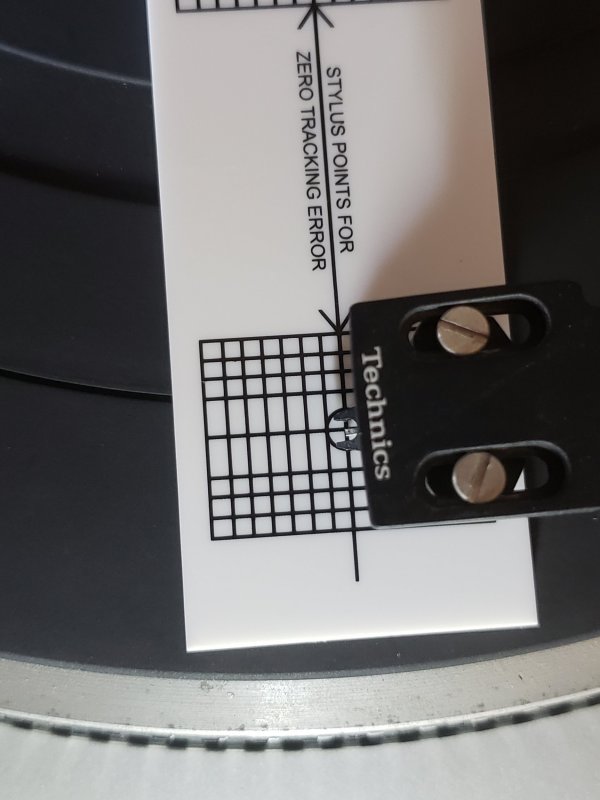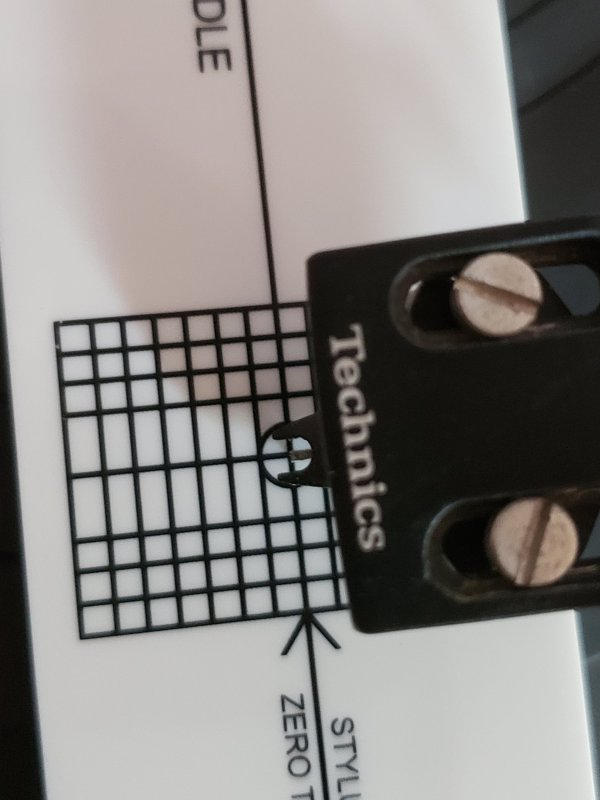Greetings,
The last time I installed a cartridge was about 40 years ago, mid 1980's. As the time I was young an naive, and just screwed it into the headshell of my Technics SL-D3 turntable; didn't test its alignment, took all of two minutes. I barely played that turntable during the digital era, but I want to rehab it now so I can put my extensive vinyl collection back into play. Since I presume my old cartridge and stylus, Ortofon LM-20, are long past their healthy lifespan, I purchased an Ortofon Super 5e cartridge, and this time I am taking the installation and alignment process seriously. I have a protractor and an azimthuth tool, and I have watched tons of video on the process. I was just about to start the operation, but I realized something: In all the videos I watched, the cartridge being used for the demonstration had a 'flat' front end that enabled you to see if it is parallel to the protractor grid-lines. But the Ortofon Super 5e has a pointy end, the same as my LM-20. I don't if one can possibly see if a 'point' is parallel to a 'line.' Here are two pics (that is the LM-20 in photos, but shape is identical to Super 5e)


See what I mean? The headshell could be misaligned, but that could just be an artifact of the camera angle, and I can't change that anyway. I mean, it LOOKS like I nailed it in the two minutes I spent installing it 40 years ago, but I am also wondering if that is hubris, and I only feel that way because there is no way that protractor can prove otherwise. I doubt that I am the first person to have come across the alignment liability associated with pointy cartridge fronts, am I? What do other people with this kind of pointy-nosed cartridge to do check alignment?
Thanks for any advice!
Otherchuck
Bonus question: I think the tracking force for the LM-20 is 1.8g, but have long since lost original installation guide. Can anyone confirm my recollection that 1.8g is correct? Thx!
The last time I installed a cartridge was about 40 years ago, mid 1980's. As the time I was young an naive, and just screwed it into the headshell of my Technics SL-D3 turntable; didn't test its alignment, took all of two minutes. I barely played that turntable during the digital era, but I want to rehab it now so I can put my extensive vinyl collection back into play. Since I presume my old cartridge and stylus, Ortofon LM-20, are long past their healthy lifespan, I purchased an Ortofon Super 5e cartridge, and this time I am taking the installation and alignment process seriously. I have a protractor and an azimthuth tool, and I have watched tons of video on the process. I was just about to start the operation, but I realized something: In all the videos I watched, the cartridge being used for the demonstration had a 'flat' front end that enabled you to see if it is parallel to the protractor grid-lines. But the Ortofon Super 5e has a pointy end, the same as my LM-20. I don't if one can possibly see if a 'point' is parallel to a 'line.' Here are two pics (that is the LM-20 in photos, but shape is identical to Super 5e)


See what I mean? The headshell could be misaligned, but that could just be an artifact of the camera angle, and I can't change that anyway. I mean, it LOOKS like I nailed it in the two minutes I spent installing it 40 years ago, but I am also wondering if that is hubris, and I only feel that way because there is no way that protractor can prove otherwise. I doubt that I am the first person to have come across the alignment liability associated with pointy cartridge fronts, am I? What do other people with this kind of pointy-nosed cartridge to do check alignment?
Thanks for any advice!
Otherchuck
Bonus question: I think the tracking force for the LM-20 is 1.8g, but have long since lost original installation guide. Can anyone confirm my recollection that 1.8g is correct? Thx!

